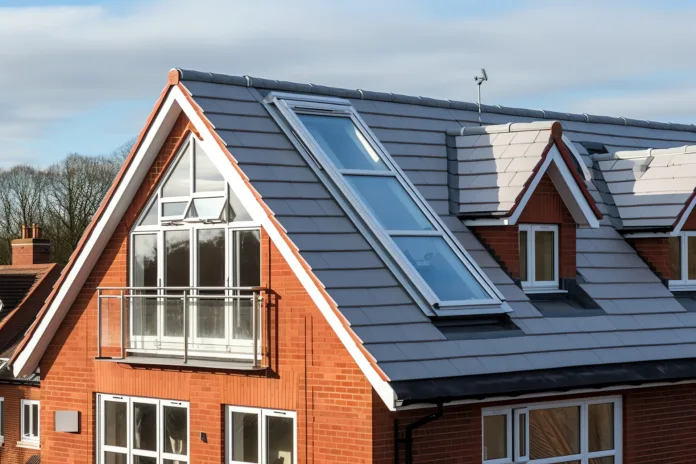Key Insights:
- Price Growth:House prices have increased by 1.4% in the first seven months of 2024.
- Market Activity:All sectors have seen year-on-year growth, though the anticipated base rate reduction has yet to significantly impact the market.
- Regional Inflation:While price inflation has improved across all UK regions, it remains slightly negative in southern England, but London has seen a slight positive change at 0.2%.
- Price Sensitivity:Approximately 20% of homes have had their asking prices reduced by 5% or more, reflecting ongoing price sensitivity among buyers.
- Time to Sell:Homes without a price reduction typically sell in 28 days, whereas those with a 5% or more reduction take around 73 days to sell.
- 2024 Forecast:House prices are projected to rise by 2.5% over the year, with an estimated 1.1 million sales.
As of July 2024, the average UK house price stands at £266,400, reflecting a 0.5% increase compared to the previous year. The overall average price is expected to grow by 2.5% by year-end.

Stronger Housing Market Activity Compared to Last Year:
All key indicators of market activity are higher than in 2023, driven largely by economic growth and improved consumer confidence. Demand for homes is up by 20% compared to the same period last year, with new sales agreed increasing by nearly 25%, building on earlier momentum. Mortgage rates have decreased, with the average 5-year fixed rate at 75% loan-to-value now at 4.5%.
Sellers are bringing properties to the market at above-average rates, often because they are also buyers. This increase in new listings has contributed to a rise in agreed sales. The number of available homes for sale has reached a seven-year high, with 33 homes per agent, providing buyers with more options. This higher supply is expected to keep price inflation moderate through 2024 and into 2025, requiring serious sellers to price competitively to achieve timely sales.
Limited Impact from the August Base Rate Reduction:
The long-awaited reduction in the base rate in August was well-received by the broader economy and positively influenced consumer sentiment. However, it has not significantly altered buyer demand compared to recent trends. The primary reason for the 20% increase in buyer demand compared to last year is the decreased demand during the summer of 2023 due to the spike in mortgage rates.
Nonetheless, there has been a slight uptick in new sales agreed following the base rate cut, as cautious buyers took advantage of the lower rates to finalize purchases. The rising number of agreed sales, up by 23%, is a more accurate reflection of the market’s health, with sales on track to be 10% higher than in 2023.
UK House Prices Increase by 1.4% So Far This Year:
A modest recovery in house price inflation is evident, supported by an increase in new sales agreements and buyers willing to pay closer to the asking price. The UK index shows a 1.4% rise in average house prices since the start of the year, with a forecast of a 2.5% increase by year-end.
The annual rate of inflation stands at 0.5%, reflecting the price declines in late 2023. Over the last decade, significant price drops occurred only in Q4 2022 and Q3 2022, driven by higher mortgage rates. This year has seen a return to lower levels of house price inflation, although it has slowed in recent months.
Overall Price Trends Show Growth, with Some Localised Declines:
The year-to-date improvement in house prices is evident across most regions. Annual price inflation ranges from -0.9% in the East of England to +5.1% in Northern Ireland. London has seen a slight positive turn (+0.2%), while the South East, South West, and East Midlands are experiencing minor declines.
Certain areas, such as Taunton (-2.0%), Dartford (-1.3%), Enfield (-1.1%), and Harrogate (-1%), continue to see price drops due to higher borrowing costs. In contrast, more affordable housing markets near larger cities are experiencing above-average price increases, including Wolverhampton (+3%), Oldham (+2.8%), and Wakefield (+2.7%).
In the Scottish Borders, house prices are rising rapidly, with Dumfries and Galloway (+4.4%), Galashiels (+3.1%), and Falkirk (+3.1%) leading the way.
1 in 5 Homes Have Reduced Asking Prices by 5% or More:
Despite positive market activity and price inflation, sellers must remain realistic in pricing, especially if they are committed to selling. The growing supply of homes for sale is increasing buyer choice, which will help moderate UK house price inflation into 2025.
Buyers are still price-sensitive, with their purchasing power constrained by higher mortgage rates. Although faster income growth is starting to alleviate this issue, affordability remains a challenge.
In August, 20% of listed homes had their asking prices reduced by 5% or more to attract buyers, which is above average but lower than the 23% seen last autumn. This trend is consistent across the country, although reductions are more common for one and two-bedroom flats.
Homes requiring a price reduction take more than twice as long to sell as those priced correctly from the outset. On average, it takes 28 days to sell a home with no price reduction and 73 days for those with a 5% or more reduction. Therefore, accurate pricing at the outset is crucial for a timely sale.
Housing Market Outlook for 2024:
The housing market is currently more balanced than it has been in the past five years. Lower mortgage rates and an improving economic outlook have attracted more sellers and buyers, supporting sales volumes and the business strategies of builders, estate agents, and lenders.
The future of mortgage rates will depend on base rate expectations, with current estimates suggesting average rates will remain above 4%. Sustained growth in household incomes is as crucial as borrowing costs to the overall health of the housing market as we move into 2025.
Author: Jag Chaggar
